Planet-disk interactions in the AB Aurigae system: revisiting the hypothetical vortex
- Laboratoire d'Astrophysique de Bordeaux, Université de Bordeaux, Pessac, France
I] Context
Structures and asymmetries detected in protoplanetary disks offer an exciting means to characterize the orbital and physical properties of embedded proto-planets, which are suspected to sculpt some of the observed features. A dozen of young disks have been reported to harbor crescent-shaped dust rings at millimeter wavelengths, with compact or more extended brightness features which could be interpreted as dust traps within vortex structures.
Among these remarkable systems, AB Aurigae is one of very few nearby, young stars, where disk asymmetries and compelling evidence of protoplanets have been concurrently found. This includes the presence of two prominent spiral arms seen in emission from the gas and small dust grains revealed by ALMA and SPHERE within the broad 120au cavity (Tang+2017, Fig.1). In addition, bright spots spread between 30au and 100au were reported with VLT/SPHERE and Subaru/CHARIS, which are debated sites of giant planet formation (Boccaletti+2020, Currie+2022, Zhou+2023, Fig.2). Beyond the cavity, a broad dust ring displays a large asymmetric brightness that was interpreted as a possible decaying vortex (Fuente+2017). Confirming the planetary nature of the suspected candidates is however a challenging task, and we propose to investigate the putative planet characteristics through the modeling of planet-induced structures in the disk.
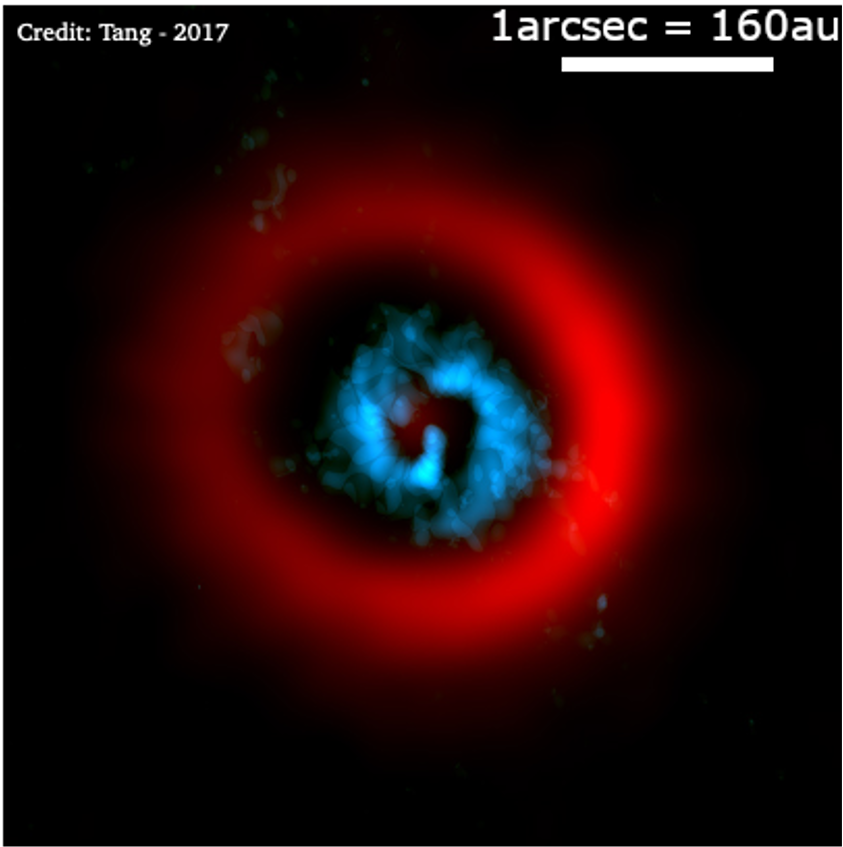
Fig 1: radio-millimetric ALMA observation of the asymmetric dust ring (red) and the CO gas spirals (blue) of the circumstellar disk around AB Aurigae
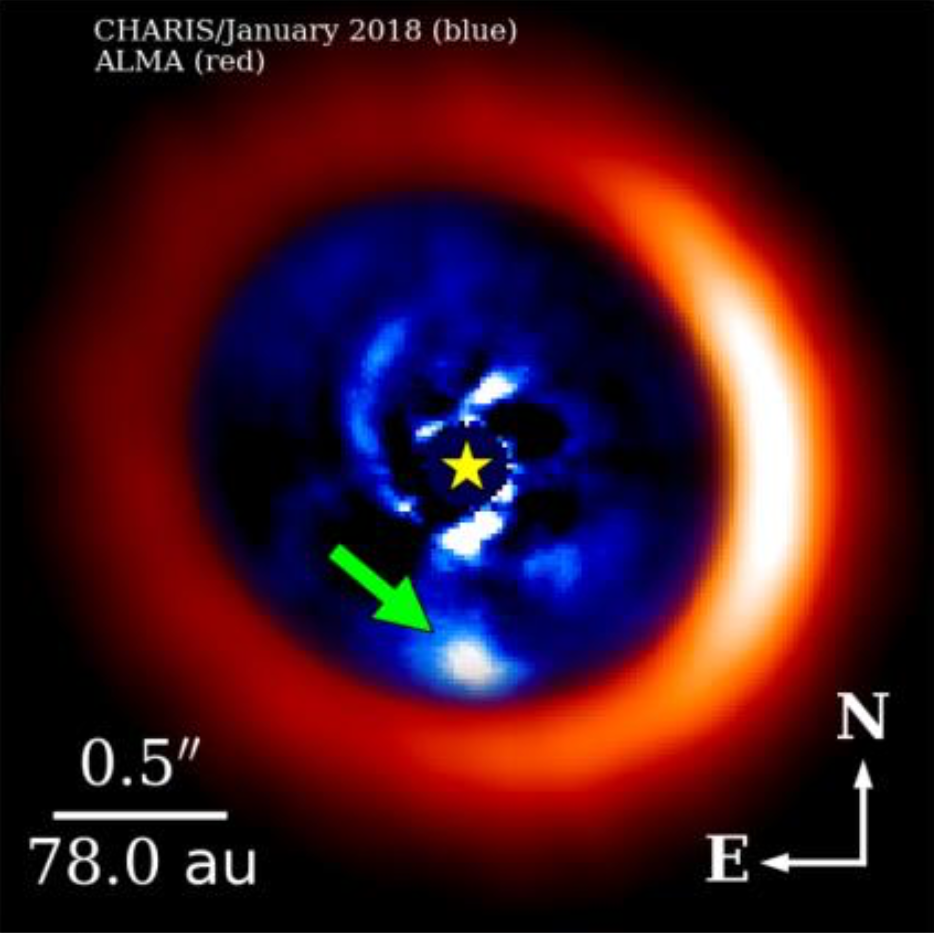
Fig 2: SCExAO/CHARIS image combined with ALMA submillimetre imaging
II] Methods and Setup
We focus here on the large scale crescent shape of the dust continuum emission in the outer ring. We revisit the hypothesis of the existence of a vortex generated by a massive planet orbiting in the cavity, and we further explore how the dust distribution can inform us on the characteristics of the assumed, embedded planet(s).
For this purpose, we have performed a large set of 2D hydrodynamical simulations with the FARGO-3D code in multi-fluid mode. We used a gaseous fluid with a low viscosity (alpha=1e-4), interacting with a 0.1mm grain-fluid. We introduced a single planet of variable mass within an equilibrium disk in the isothermal approximation, and we explored a large range of orbital properties and planetary masses based on the existing observational constraints. Vortex structures are naturally produced when the Rossby-wave instability develops at the edge of the cavity (Fig.3). We selected the simulation runs where planet-disk interactions resulted in rings located at the observed radial distance of the outer ring, and capable of trapping the dust grains in expected azimuthal structures. Based on FARGO3D dust surface density maps, radiative transfer simulations with the RADMC3D code were performed to simulate the ALMA continuum map. We finally compare the azimuthal extent and contrast ratio of the simulated ring to constrain the possible parameter space for the planet’s characteristics.
III] Results
A large set of planetary configurations appear consistent with the observed morphological characteristics of the dust crescent (radial location, contrast and azimuthal width). We explored for the first time the case of eccentric planets in this system, and we find that the dust continuum maps can still be reproduced with giant planet orbital eccentricities as large as e=0.6. We illustrate the degeneracy in the semi-major axis-eccentricity domain in Fig. 4, where we also report the planetary mass range compatible with the dust ring morphology (from 2 to 15Mjup depending on the orbit properties). This diagram extends the canonical case of a 2Mjup circular planet located at the outer edge of the cavity proposed and studied in Fuente+2017. In this framework, this study suggests that any independent, direct constraint on the planet semi-major axis and eccentricity can thus provide an estimate for the protoplanet dynamical mass, based on the modeling of the planet-induced structures.
Besides, we note that the large azimuthal extent of the grain distribution within the ring (FWHM>90deg) and its low contrast ratio can only be reproduced when the gas vortex has started to dissipate and thus when the trapped grains are released from their initial compact configuration. The grains then concentrate at the outer edge of the cavity, in the pressure gradient maximum, and rapidly form an azimuthally uniform, symmetrical ring (Fig.5). We discuss how the short timescale of the vortex dissipation restricts the likelihood to observe this short transient phase, when the ring’s morphology matches the observed asymmetry. We also discuss alternative scenarios, including the impact of a slow planet growth-phase (following Hammer+2019), to extend the lifetime of the observed dust crescent.
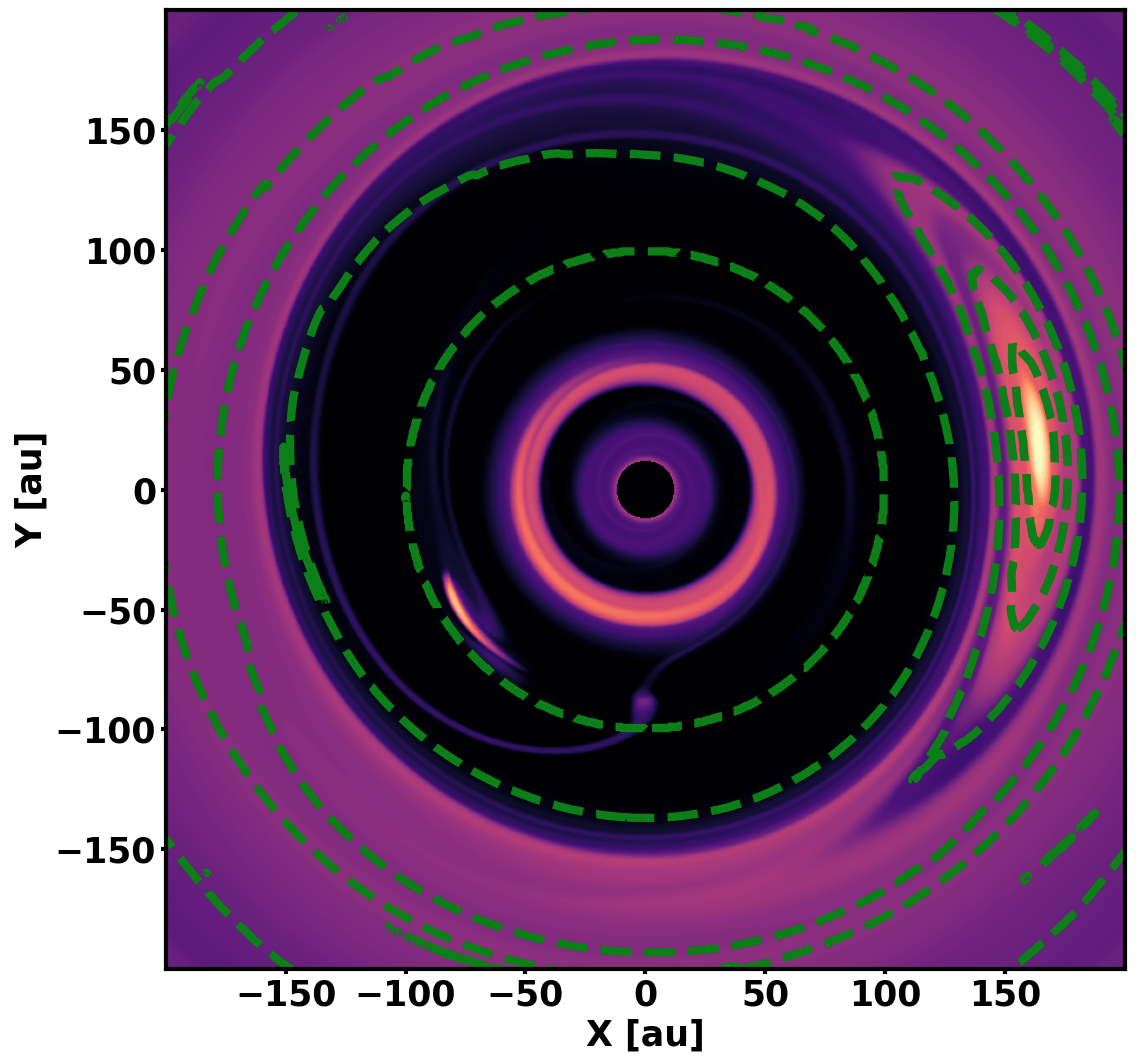
Fig 3 : The presence of the planet creates in the gas fluid an extremum in the Liso function at the edge of the cavity, forming anticyclonic gas vortices that can trap dust. Liso = cs^2 * Sigma_gas / (nabla ^ v_gas). The color gradient represents the density of dust particles (log scale). Contour lines correspond to an incrementation of 1.25e-6 of Liso. The dust is trapped at the extremum of Liso
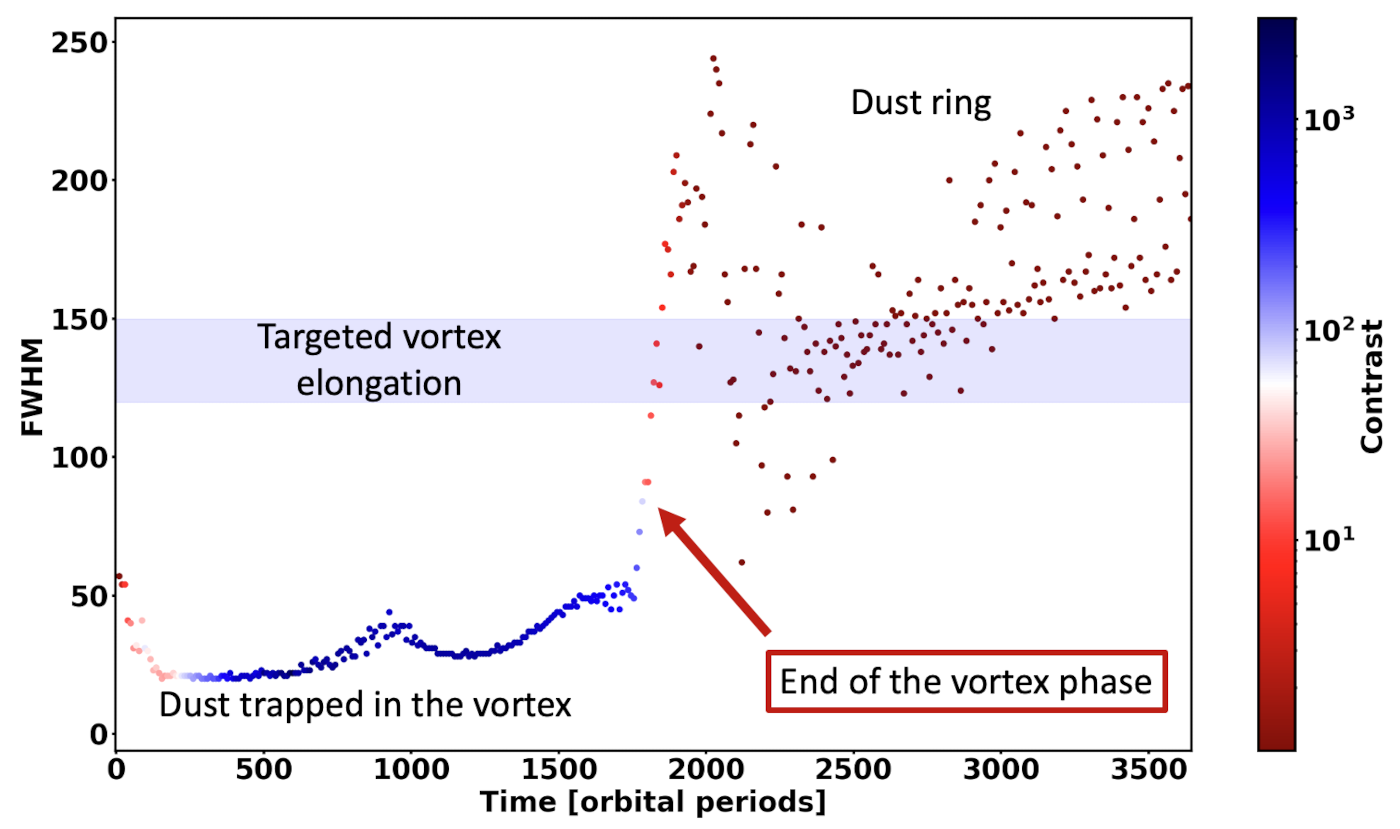
Fig 4: Evolution of dust FWHM as a function of planet orbital time
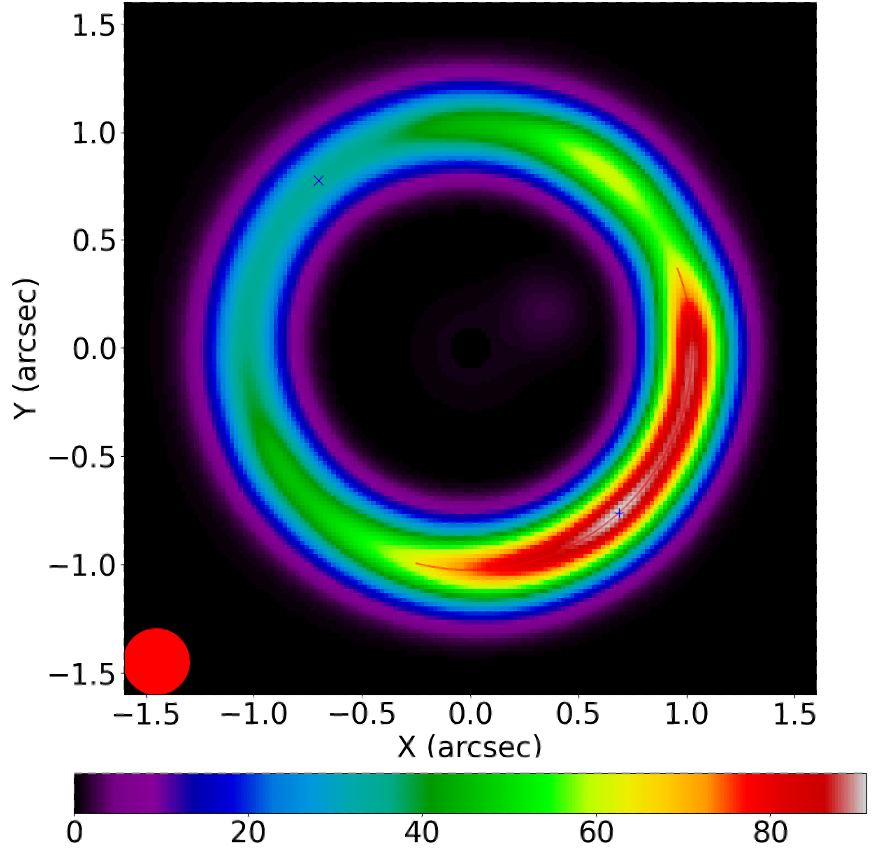
Fig 5: simulated image at λ=0.9mm based on the FARGO3D density map at the time of the vortex dissipation (face-on view). The azimuthal extent and the contrast ratio of the mm ring emission can be reproduced with an embedded eccentric planet in the cavity.
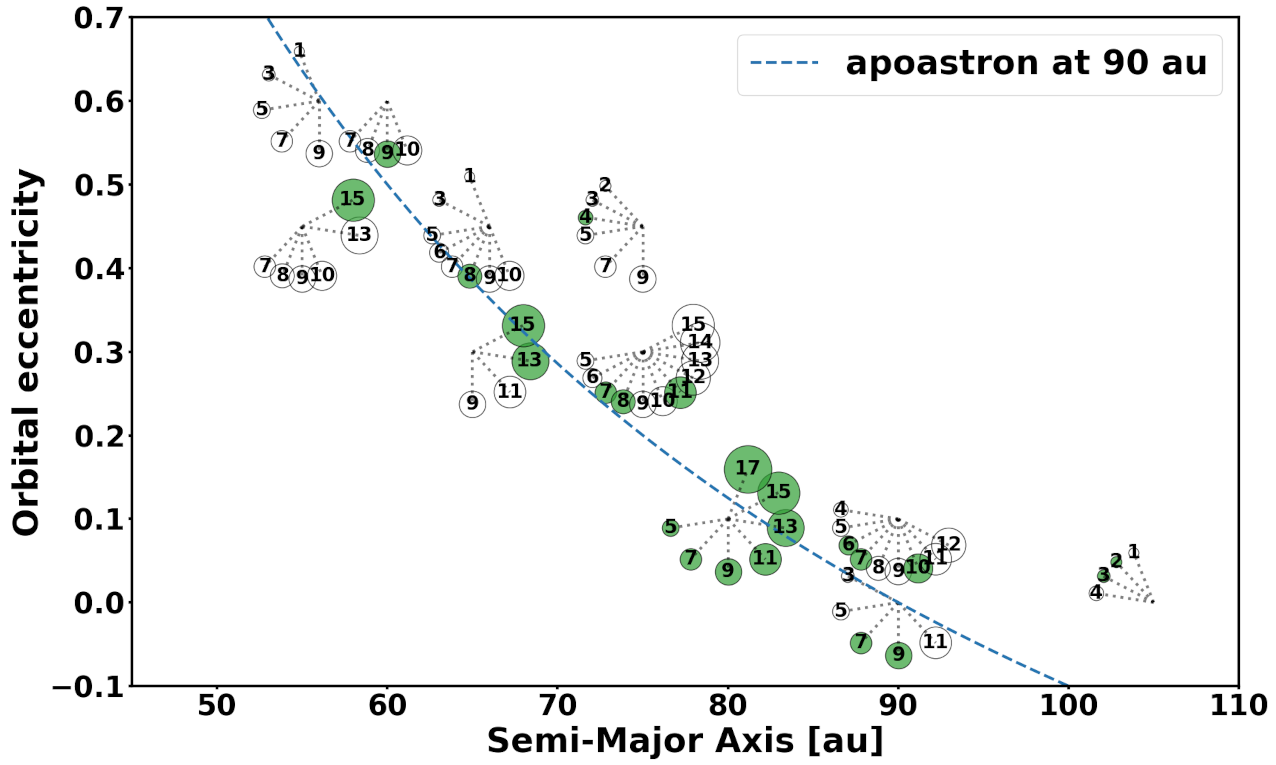
Fig 6: Each circle on the graph represents a simulated planetary system, characterized by its semi-major axis (x-axis), eccentricity (y-axis) and planetary mass (number/circle size). Connected points correspond to simulations with the same semi-major axis-eccentricity couple but different planetary masses. Green points correspond to the cases reproducing the asymmetrical ring around AB Aurigae.
How to cite: Collin-Dufresne, T., Di Folco, E., and Pierens, A.: Planet-disk interactions in the AB Aurigae system: revisiting the hypothetical vortex, Europlanet Science Congress 2024, Berlin, Germany, 8–13 Sep 2024, EPSC2024-1112, https://doi.org/10.5194/epsc2024-1112, 2024.